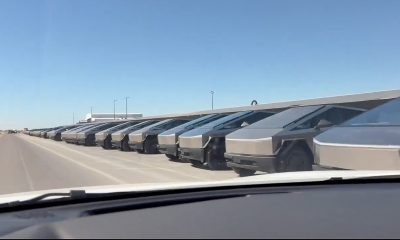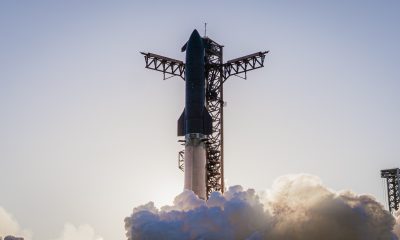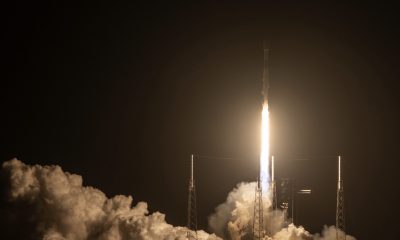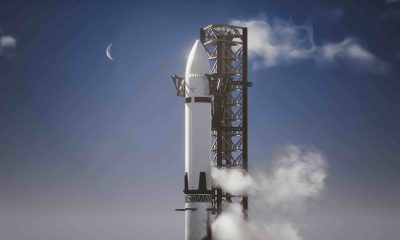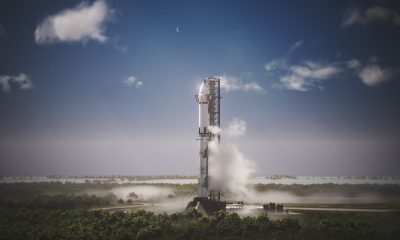

News
Boeing Starliner spacecraft successfully returns to flight 29 months after ill-fated debut
More than three years after SpaceX’s Crew Dragon spacecraft first safely reached orbit and almost three and a half years after Boeing’s Starliner crew capsule’s ill-fated launch debut, Boeing has finally returned to flight and made it farther than ever before towards a successful test flight.
Almost ten months after Boeing’s first attempt at Starliner’s second uncrewed Orbital Flight Test (OFT-2 #1), the stars aligned. As expected, the United Launch Alliance’s Atlas V rocket lifted off on time at 6:54 pm EDT (22:54 UTC) on Thursday, May 19th, ascending from Cape Canaveral Space Force Station (CCSFS) Launch Complex 41 (LC-41) without issue. After a four and a half minute burn, the Atlas V booster – powered by a Russian-built RD-180 engine – separated and the Centaur upper stage – powered by two Aerojet Rocketdyne RL-10 engines – took over.
Another six minutes later, Centaur shut down and Starliner ultimately separated from the rocket a bit less than 12 minutes after liftoff. Unlike SpaceX’s Crew Dragon, though, Starliner separated from its launch vehicle before reaching orbit – a task Boeing engineers chose to reserve for the spacecraft itself to limit stress on the spacecraft and crew in the event of a high-altitude abort. However, that design decision also adds significant risk in other ways and – after the spacecraft’s extremely poor performance during its first launch attempt – turns a Starliner launch into a sort of 30-minute cliffhanger.
While just a hair shy of true orbit, Starliner’s suborbital launch trajectory means that whether or not it wants to, the spacecraft will reenter Earth’s atmosphere about an hour after liftoff if it can’t complete a minute-long orbital insertion burn. In the case of OFT-2, that burn came about 31 minutes after liftoff and was thankfully successful, inserting Starliner into a stable, circular orbit and undoubtedly triggering a massive wave of relief for all employees involved. From that stable orbit, Starliner can finally begin to prepare to rendezvous with the International Space Station (ISS) for the first time ever.
The story of Starliner’s tortured orbital flight test (OFT) campaign began in earnest on December 20th, 2019, when an uncrewed prototype of the Boeing spacecraft first attempted to launch to the International Space Station (ISS) atop a United Launch Alliance (ULA) Atlas V rocket. Infamously, a major software bug that could have been easily detected with even the most basic integrated hardware-in-the-loop prelaunch testing caused Starliner to lose control the moment it separated from Atlas V. Only through a heroic last-second effort was Boeing able to insert Starliner into orbit and prevent the spacecraft from reentering prematurely, which would have likely destroyed it. After hundreds of seconds of unplanned burns of its many attitude control thrusters, Starliner no longer had enough propellant to safely reach the ISS.
Boeing would later correct another completely unrelated software bug mere hours before Starliner’s planned reentry and recovery. If undetected, it could have caused the spacecraft’s capsule and service sections to crash into each other shortly after separation, potentially damaging the capsule’s heat shield and dooming it to destruction during reentry. Had astronauts been aboard, either of the two software bugs could have potentially resulted in crew fatalities and total mission failure. Instead, through a combination of sheer luck and a quick emergency response from Boeing and NASA teams, the spacecraft was saved and recovered in New Mexico.
On a positive note, aside from raising deep and foreboding questions about Boeing’s software development and integrating testing capabilities and NASA’s inept and inconsistent oversight, OFT-1 did still demonstrate that Starliner was able to reach orbit, operate in space, deorbit, survive atmospheric reentry, and land softly under parachutes.
However, the problems were about to continue and spread beyond software. On July 30th, 2021, shortly before a different uncrewed Starliner was scheduled to reattempt the first Orbital Flight Test, the launch was aborted. Eventually, Boeing and NASA reported that 13 of Starliner’s 24 main oxidizer valves had failed to open during a prelaunch test just a few hours before liftoff. The resulting investigation ultimately concluded that the Aerojet Rocketdyne-supplied valves had a faulty design and that Boeing had failed to properly insulate those valves from humidity and water intrusion. It also delayed the next OFT-2 launch attempt by almost ten months.
But finally, after almost 30 months of work to rectify those software and hardware failures, Starliner has intentionally reached a stable orbit without running into a major problem – certainly cause for some amount of optimism. Still, safely rendezvousing and docking with the ISS may be the biggest and riskiest challenge Starliner has faced yet and Boeing will be attempting the feat for the first time in its modern history. Starliner is expected to begin proximity operations around 3 pm EDT on May 20th. If the first attempt is perfect, docking could occur as early as 7:10 pm EDT.
Ultimately, even if Boeing is now more than three years behind SpaceX, whose Crew Dragon spacecraft first reached orbit and the ISS in March 2019 and launched its first astronauts in May 2020, it’s essential that NASA has two redundant crew vehicles available to carry its astronauts to and from the station. SpaceX’s extraordinary success and heroic efforts have allowed the company to singlehandedly ensure NASA access to the ISS since November 2020, but no complex system is perfect and even a failure outside of SpaceX’s control could trigger a long delay that could threaten NASA’s uninterrupted presence on the International Space Station.
NASA has contracts with SpaceX to maintain that uninterrupted presence at the ISS through Crew Dragon’s Crew-7 mission, which could launch as early as September 2023 and would then return to Earth around March 2024. If OFT-2 is completed without significant issue, Boeing’s next priority is Starliner’s Crew Flight Test (CFT), a crewed launch debut that could happen before the end of 2022.
After that, Starliner’s first operational crew launch could potentially occur in Q1 2024, just before Crew Dragon’s Crew-7 recovery. Following Crew Dragon’s near-flawless uncrewed test flight, it took another 14 months for NASA and SpaceX to proceed to Demo-2, Dragon’s Crew Flight Test equivalent. Dragon’s first operational astronaut launch occurred in November 2020, 20 months after its uncrewed demo flight. If NASA follows a similar path for Starliner, that meshes well with an operational debut in early 2024.
Cybertruck
Tesla announces delivery timeline for Cybertruck in new market
“Coming soon! Estimated deliveries in Q1 for UAE.”
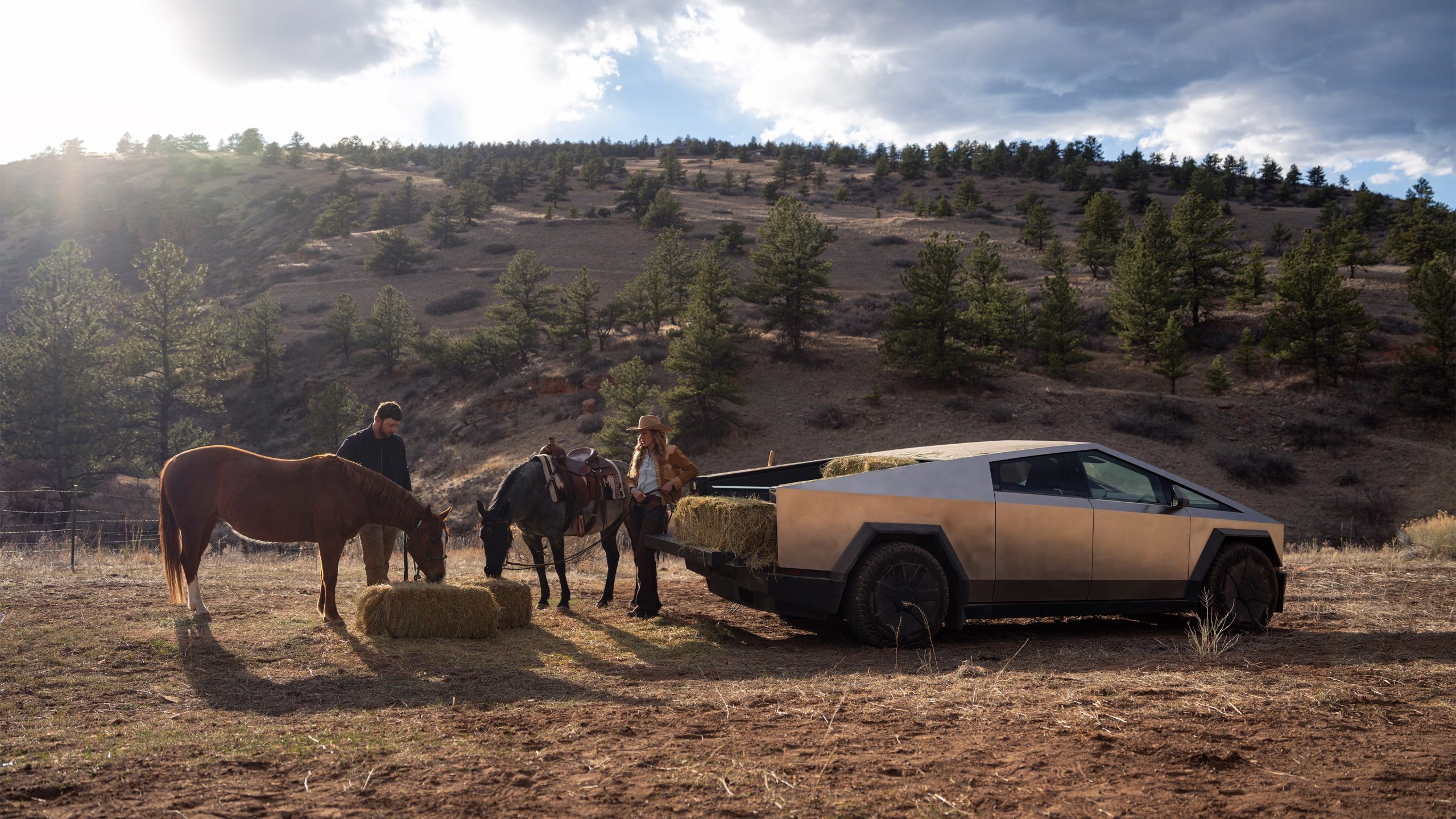
Tesla announced its delivery timeline for the Cybertruck as it heads to a new market.
Tesla Cybertruck deliveries started in the United States and Canada back in late 2023. However, the company has been looking to expand the all-electric pickup to new markets, including the Middle East, for which it opened up orders for earlier this year.
Initially, Tesla planned to launch deliveries late this year, but there has been a slight adjustment to the timeline, and the company now anticipates the pickup to make its way to the first adopters in the United Arab Emirates in Q1 2026.
This was confirmed by the Tesla Cybertruck program’s lead engineer, Wes Morrill:
Coming soon! Estimated deliveries in Q1 for UAE
— Wes (@wmorrill3) November 2, 2025
Tesla first opened orders for the Cybertruck in the Middle East in mid-September of this year. It will be priced at AED 404,900 for the Dual Motor All-Wheel-Drive ($110,254) and AED 454,900 ($123,869) for the Cyberbeast trim.
The Cybertruck has been a highly anticipated vehicle in many parts of the world, but its ability to be sold in various regions is what is truly causing delays in the company’s efforts to bring the electric pickup worldwide.
Tesla confirms Cybertruck will make its way out of North America this year
In Europe, various agencies have challenged the design of the Cybertruck, arguing that it is unsafe for pedestrians due to its sharp edges and “boxy” design.
Agencies in the EU have said the vehicle’s “blade-like” protrusions are a violation of rules that ban sharp exterior edges that could cause severe injuries.
In Asia, Tesla will likely have to develop a smaller, more compact version of the vehicle as it does not align with local standards for urban environments. However, Tesla filed for energy consumption approval for the Cybertruck in December 2024, but there has been no real update on the status of this particular inquiry.
Overall, these issues highlight a real bottleneck in futuristic vehicle designs and the out-of-date regulations that inhibit the vehicle from becoming more widely available. Of course, Tesla has teased some other designs, including a more traditional pickup or even a compact Cybertruck build, but the company is not one to shy away from its commitments.
Nevertheless, the Cybertruck will appear in the Middle East for the first time in 2026.
Elon Musk
Tesla teases new AI5 chip that will revolutionize self-driving
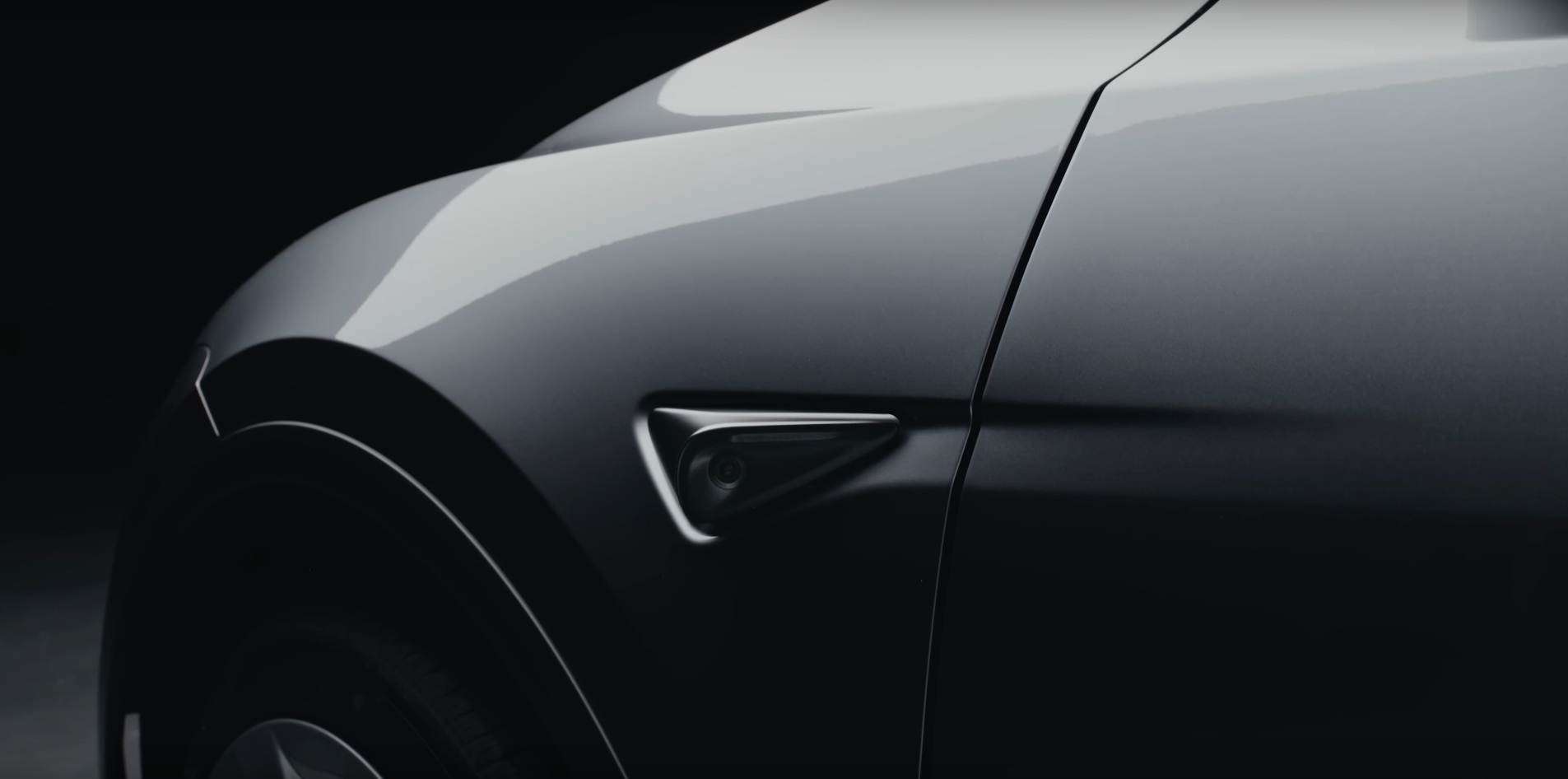
Elon Musk revealed new information on Tesla’s AI5, previously known as Hardware 5, chip, for self-driving, which will be manufactured by both Samsung and TSMC.
The AI5 chip is Tesla’s next-generation hardware chip for its self-driving program, Optimus humanoid robots, and other AI-driven features in both vehicles and other applications. It will be the successor to the current AI4, previously known as Hardware 4, which is currently utilized in Tesla’s newest vehicles.
Elon Musk reveals Tesla’s HW5 release date, and that it won’t be called HW5
AI5 is specially optimized for Tesla use, as it will work alongside the company’s Neural Networks to focus on real-time inference to make safe and logical decisions during operation. It was first teased by Tesla in mid-2024 as Musk called it “an amazing design” and “an immense jump” from the current AI4 chip.
It will be roughly 4o times faster, have 8 times the raw compute, 9 times the memory capacity, 5 times the memory bandwidth, and 3 times the efficiency per watt.
It will be manufactured by both TSMC and Samsung at their Arizona and Texas fab locations, respectively.
Here’s what Musk revealed about the chip yesterday:
Different Versions
Samsung and TSMC will make slightly different versions of the AI5 chip, “simply because they translate designs to physical form differently.” However, Musk said the goal is that its AI software would work identically.
This was a real concern for some who are familiar with chip manufacturing, as Apple’s A9 “Chipgate” saga seemed to be echoing through Tesla.
Back in 2015, it was found that Apple’s A9 chips had different performances based on who manufactured them. TSMC and Samsung were both building the chips, but it was found that Samsung’s chips had shorter battery life than TSMC-fabricated versions.
Apple concluded that the variance was about 2-3 percent. However, Tesla will look to avoid this altogether.
Release and Implementation into Vehicles
Musk said that some samples will be available next year, and “maybe a small number of units” would equip the chip as well. However, high-volume production is only possible in 2027.
This means, based on Tesla’s own timeline for Cybercab production in Q2 2026, early iterations of the vehicle would rely on AI4. Many believe AI4 can be utilized for solved self-driving, but the power of subsequent versions, including AI5 and beyond, will be more capable.
AI6 and Beyond
AI6 will utilize the same fabs as AI5, but there would be a theoretical boost in performance by two times with this version.
AI6 could enter volume production by mid-2028. However, AI7, which Musk only briefly mentioned, “will need different fabs, as it is more adventurous.”
News
Tesla makes a splash at China’s Import Expo with Cybercab and Optimus
It appears that Elon Musk’s vision is something that still resonates with people.
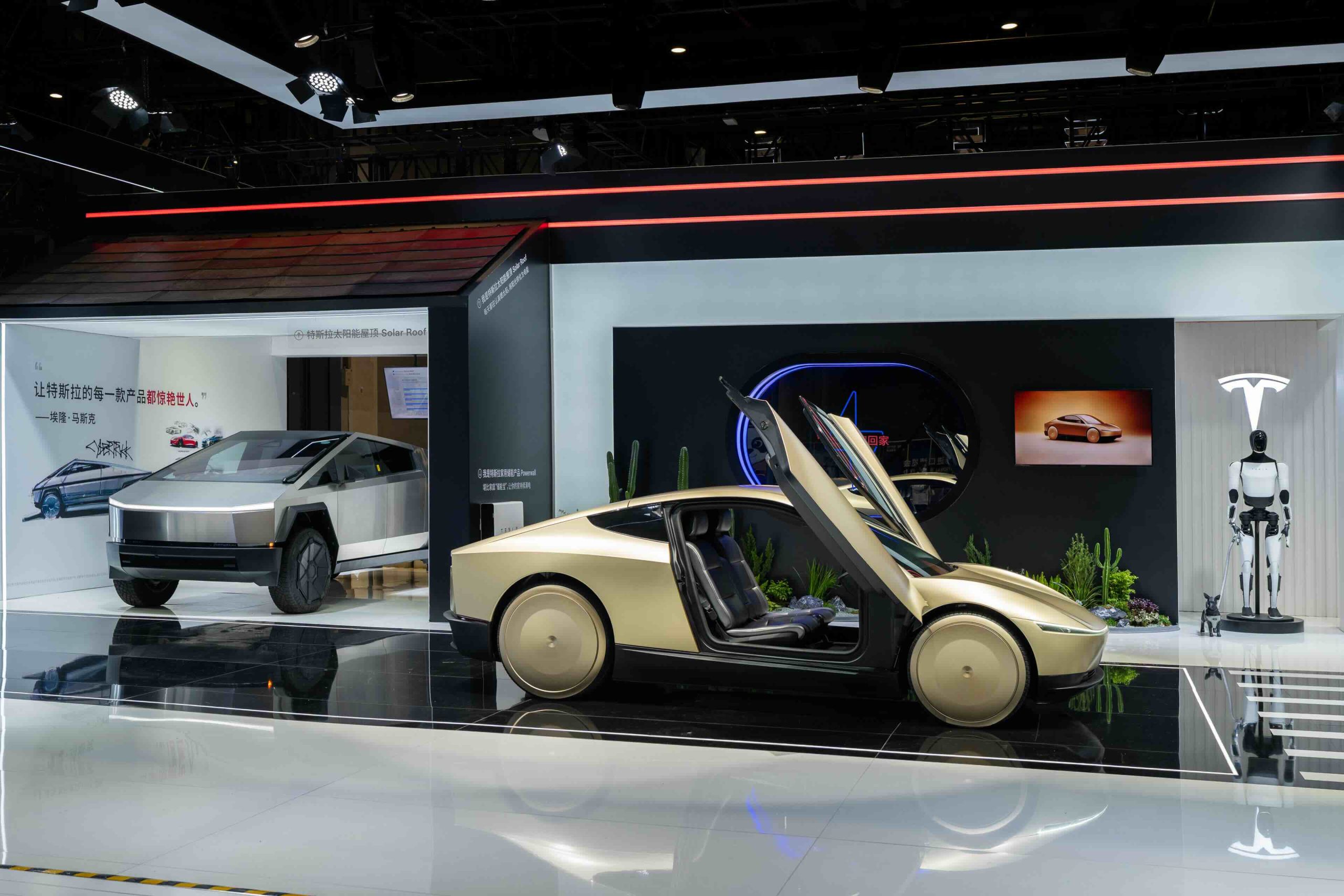
Tesla’s fully autonomous Cybercab made its first appearance in the Asia-Pacific region at the 8th China International Import Expo (CIIE) in Shanghai on November 5, becoming the centerpiece of an event that drew 12 of the world’s leading automakers.
The new model offers a glimpse into Tesla’s driverless ride-hailing future, and based on the reception of the event’s attendees, it appears that Elon Musk’s vision is something that still resonates with people.
Tesla showcases its driverless vision with the Cybercab
At this year’s expo, themed “Mobility, Infinite Possibilities,” Tesla’s futuristic two-seat Cybercab stood out as a showcase of complete autonomy. According to Tesla staff, the vehicle lacks both a steering wheel and pedals, relying entirely on Tesla’s cameras and an end-to-end neural network designed for full self-driving.
The Cybercab will ultimately serve in the company’s expanding Robotaxi fleet, a cornerstone of Elon Musk’s long-promised autonomous mobility network. During the event, a Tesla employee emphasized that the Cybercab’s model’s compact layout reflects real-world usage, as 92% of trips involve just one or two passengers, as noted in a Sina News report. Trips that require more passengers could easily be handled by the Model 3 and Model Y, which are both capable of seating four, or even five passengers.
Optimus, Tesla’s humanoid robot that is designed for both home and industrial use, was also present at the event. Similar to the Cybercab, Optimus also attracted quite a lot of attention from the event’s attendees.
Automakers reaffirm commitment to Chinese innovation
Other global automakers, including Volkswagen, Mercedes-Benz, and Honda, also displayed cutting-edge concept cars and intelligent systems, but few captured the same interest as Tesla’s bold showcase of its autonomy and robotics.
Beyond new models, this year’s CIIE highlighted a renewed focus on local innovation and collaboration in China’s rapidly evolving EV landscape. Executives from Volkswagen, Audi, and General Motors reaffirmed that their long-term strategies center on “in China, for China,” strengthening R&D operations and forming tech partnerships with domestic suppliers.
-

 News1 week ago
News1 week agoTesla Cybercab spotted testing on public roads for the first time
-

 Elon Musk5 days ago
Elon Musk5 days agoNeuralink’s first patient could receive an upgrade: Elon Musk
-
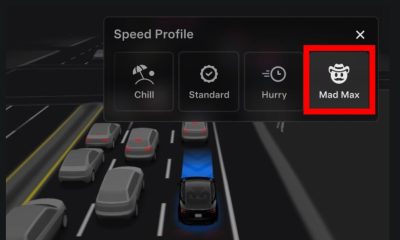
 News2 weeks ago
News2 weeks agoTesla ‘Mad Max’ gets its first bit of regulatory attention
-
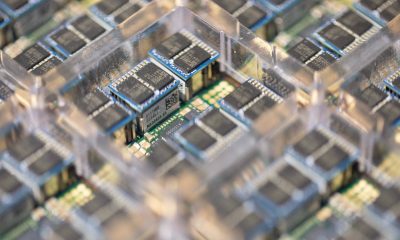
 News2 weeks ago
News2 weeks agoTesla reveals its plans for Hardware 3 owners who are eager for updates
-

 News6 days ago
News6 days agoNeuralink’s first human patient reflects on 21 months with brain implant “Eve”
-

 News2 weeks ago
News2 weeks agoTesla VP explains why end-to-end AI is the future of self-driving
-

 News5 days ago
News5 days agoTesla Cybercab almost looks production ready in new photos
-
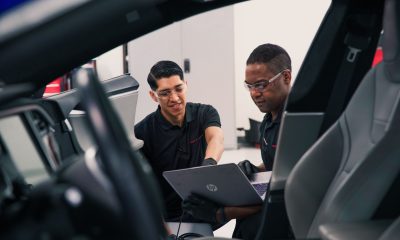
 News1 week ago
News1 week agoTesla makes a massive change to a Service policy that owners will love


